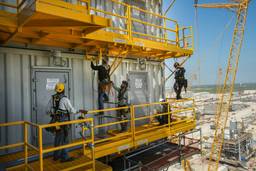After a Long Defeat, Labor Is Rising from the Ashes
Stephen Franklin on labor’s losses—and explosive resurgence
Stephen Franklin
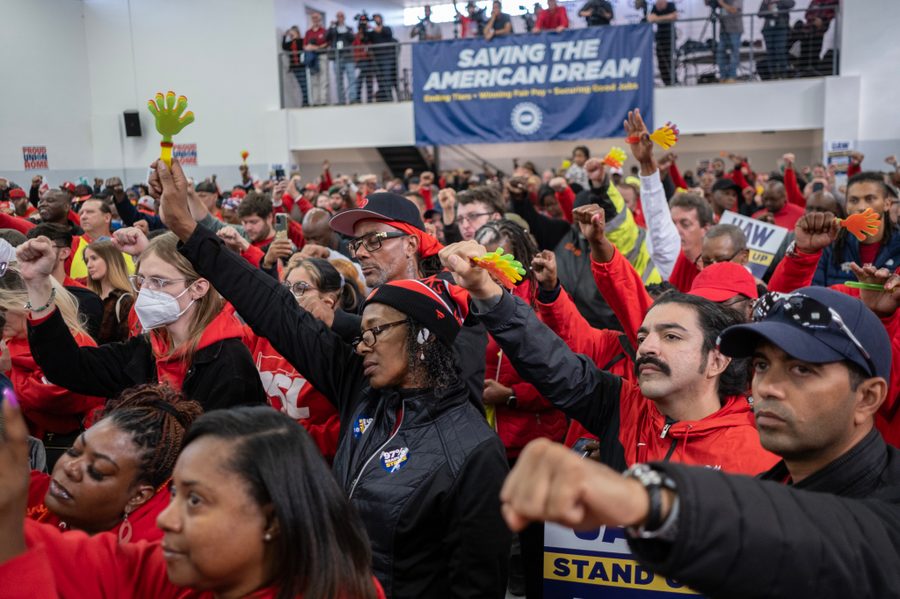
His voice read despair and his face defeat. He had been beaten down as a vet coming home from Vietnam, and now he and his union were beaten again.
When, he wondered, are the defeats going to end?
The vet and unionist was slowly taking down a picket station that the United Auto Workers (UAW) had set up in Peoria, Ill., during its heartbreaking battle with Caterpillar. After four years of running strikes from 1991 to 1995, the union had grudgingly accepted the company’s original offer, suffering a deep emotional and organizational wound.
It was the 1990s and organized labor seemed impaled on a death spiral. The Peoria workers’ despair would spread across blue-collar America, driven by factory closings and crushed expectations of a decent, good-paying job.
Strikes had dwindled. Contracts were riddled with givebacks, paltry wage increases and disappearing benefits. U.S. labor, heaving with discontent over its downward slide, would eventually break into competing factions.
In writing a book about that vet and other workers in 2001, I called the effort “Three Strikes.” But I wasn’t counting disputes or walkouts; I was leaning on the baseball metaphor.
I was asking an existential question. Jobs were fleeing overseas, profit-driven executives helped erase decades of labor rules and protections and many politicians and citizens were ignorant to the plight of workers.
The question: Was labor fated to go out on strike three? That was the future as I saw it.
But that was then, and now labor may be the phoenix rising from its ashes.
Consider the signs: Strikes are up. Contract deals are sweeter. And notwithstanding business experts’ warnings about the futility of strikes, especially ones based on unprecedented demands, workers across industries have racked up stunning contract gains.
Take the Teamsters, for instance. Despite UPS’ plea that it had to conserve money, the Teamsters won a $7.50 per hour pay raise over five years for all of its members, put an end to forced weekend overtime and won air conditioning for new delivery vehicles.

Not too long after, the UAW scored the largest wage and benefit increases in decades. It canceled out concessions with the automakers in 2008, saved plants slated to close and won a foothold in newly opened electric vehicle battery plants.
Kaiser Permanente workers won a 21% pay increase over four years. And after a long strike and the entertainment industry’s initial dismissal of the union’s demands as unacceptable and far-fetched, the Writers Guild of America (WGA) won pay increases, improvements to pensions and other benefits and secured protections from the use of artificial intelligence to replace workers. The union valued the annual gains for its three-year contract at $233 million. American Airlines’ 15,000 pilots also recently won jaw-dropping pay raises without going on strike.
Things are far different from when I was writing my book. This time, union leaders fed on their members’ dismay to stage unusually combative, in-your-face contract campaigns that produced results. Rank-and-file Teamsters joined the bargaining, and both the Teamsters and the UAW launched daily media campaigns and loudly voiced their complaints when they didn’t like the companies’ offers. In the late 20th century, bargaining was largely done in secret, and members did not know the details of the contract until it was time for a membership vote.
During the contract campaign, Teamsters president Sean O’Brien helped bury a legacy of passive bargaining by a union ridden by decades of scandal and corruption. There was no sweet-talking from O’Brien months before contract talks started. “We gotta strategize, we gotta organize and then we gotta pulverize UPS,” he said in October 2022 at a Teamsters for a Democratic Union (TDU) gathering in Chicago. When talks with UPS were not going the union’s way, O’Brien walked away from the bargaining table, saying the company had to do better.
For the autoworkers, President Shawn Fain’s theme was more visceral and basic. It was a designed strategy to signal a new era that would make up for the concessions the union offered up to the Big Three when the nation’s automakers were in deep distress during the 2007-2008 financial crisis.
The recently elected heads of those two unions proclaimed unprecedented and seemingly risky contract demands because they had pitched themselves to their rank and file as new voices that would shake up their unions. This was more true for Fain, a one-time electrician and union official from Kokomo, Ind., who benefited from the surge of support for an insurgent movement within the union, Unite All Workers for Democracy, the first movement ever to dislodge the one-party rule that ran the UAW for more than 70 years.
O’Brien was less of an outsider since he was once a top national leader within the union. But he broke with former Teamster President James P. Hoffa in 2017 and sought support from the TDU for a dissident slate, winning election in 2021. (The TDU is a survivor from the days when reform movements sprouted prominently within U.S. unions.)
Fain also broke UAW tradition by bargaining with all of Detroit’s Big Three at the same time and called for surprise strikes at key facilities to apply the greatest pressure. The UAW used to pick an individual bargaining target, secure a deal and then apply it to the others. The rank and file recently voted to ratify the contracts the UAW secured.
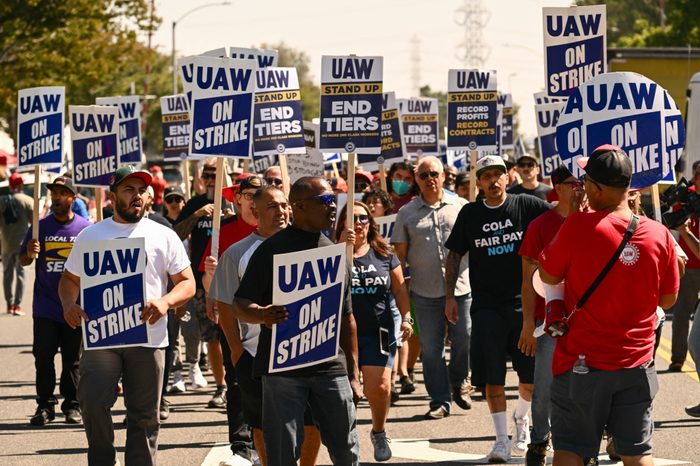
The horizon for workers appears brighter for other reasons as well.
In the last few decades, there’s been an explosion of local worker centers across the country: Arise Chicago, the Workers Defense Project in Texas and the Warehouse Worker Resource Center (WWRC) in California, among others. The WWRC has, for example, won hefty legal settlements for workers and helped promote an unprecedented labor-protection law for California warehouse workers.
These are organizations that speak up and win victories for workers without necessarily linking them to unions. They see their primary goals as giving workers a voice and helping them stand up for themselves.
There are also new groups that target specific jobs, such as those for gig, restaurant or domestic workers, and champion pro-worker causes without relying on the union organizing model.
Restaurant Opportunities Center United, is one of these. It was born in 2001 out of the 9/11 attacks and sudden crisis for restaurant workers who were displaced by the terror attack. It has helped pass minimum wage laws for restaurant workers in more than 10 states and 20 cities, according to the group.
And there are workplace safety groups, such as the National Advisory Committee on Occupational Safety and Health, that fill an enormous gap by speaking up about the dangers workers face on the job. Its work is mirrored by local groups that point out workplaces where workers are maimed or killed.
So why did this major transformation in the labor movement happen?
One reason is that rank-and-file upheavals produced new leaders, and both they and their unions became less terrified of strikes. Enormous executive salaries and surging corporate profits (amid years of stagnant wages for workers) also ignited the fury needed for workers to undertake the necessary fights. Ultimately an unprecedented victory here and a successful organizing drive there created momentum and a new conception of what workers can win.
If unions made it clear that their efforts are for the common good, that could make all the difference in garnering support. When the Chicago Teachers Union struck in 2012, for example, city officials thought the strike would quickly collapse because of pushback from parents and the community. But city officials guessed wrong. The teachers had community support and the union won the dispute.
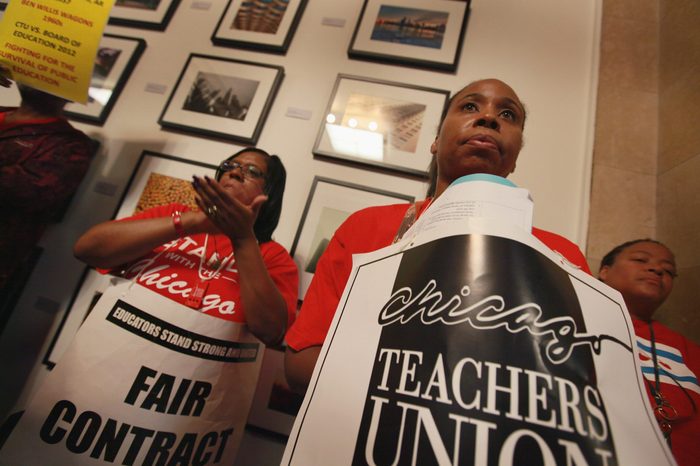
But, even with the major wins and string of successful strikes across the country, U.S. labor still faces daunting challenges.
The stench of union corruption, a long-time mantra promoted by anti-union groups, persists among labor’s foes and critics. That’s the case even though the government’s long-term efforts to wipe out corruption within the Teamsters, Laborers’ International Union of North America, the International Longshore and Warehouse Union (ILWU) and UNITE HERE are history, and the unions have largely turned new pages.
Still, in 2023, as of November, government investigations had led to more than 80 legal actions against union officials across the country, with accusations ranging from theft of union funds to racketeering.
But the wrongdoing within the UAW was a major setback.
More than a dozen UAW officials and two former union presidents have gone to prison in recent years because of wrongdoing and corruption. Collectively, they reportedly pocketed millions of dollars in union funds.
This misconduct within the UAW fed the stereotypes and was stunning on several accounts because it was widespread and included top-ranking leaders. Such corruption seemed implausible for a once proud and powerful union that had quit the AFL-CIO in 1968 because former UAW president Walter Reuther felt that it had failed to speak out on common issues and aggressively organize. “The AFL-CIO is becoming increasingly the comfortable, complacent custodian of the status quo,” Reuther said.
Then there are the labor laws that corporations and their anti-union consultants have used to thwart or delay union organizing efforts. There are right-to-work laws in 27 states, which say that workers do not have to be locked into joining a union if the company has a security agreement with the union. The laws were spawned in the late 1940s in reaction to the spurt of unions. They were supported by Southern segregationists, who fanned fears of Black workers in unions defying Jim Crow laws.
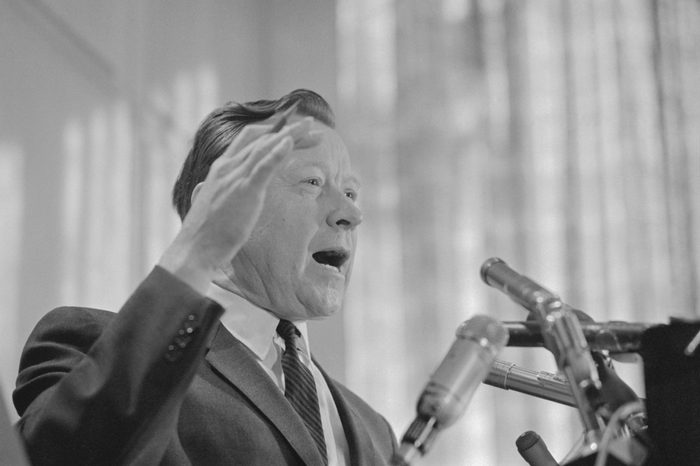
Then there are the labor laws that corporations and their anti-union consultants have used to thwart or delay union organizing efforts. There are right-to-work laws in 27 states, which say that workers do not have to be locked into joining a union if the company has a security agreement with the union. The laws were spawned in the late 1940s in reaction to the spurt of unions. They were supported by Southern segregationists, who fanned fears of Black workers in unions defying Jim Crow laws.
And despite the excitement about new organizing efforts, corporate giants like Amazon and Starbucks are examples of major corporations that have been largely successful in keeping a lid on their workers’ drives to join a union. Only one Amazon warehouse, JFK8 in Staten Island, has joined the Amazon Labor Union. And while hundreds of Starbucks stores have unionized in recent years, they still represent only a fraction of the company’s locations.
In the meantime, the National Labor Relations Board (NLRB), which has leaned heavily in favor of workers under Biden appointee Jennifer Abruzzo, has filed dozens of complaints against Starbucks for violating national labor laws.
It’s also a grim reality that despite labor’s latest stirrings, U.S. union membership has been steadily plummeting. The most recent government figures show that union membership has dropped to 10.1% of the nation’s workforce, the lowest number since updated government recordkeeping began in 1983.
Take the UAW. It has dropped to about 400,000 members from 1.5 million in 1979. To be sure, the downward slide of the labor movement has been significant in blue-collar jobs that once were decent-paying union jobs. In 1983, unions covered 28.1% of the nation’s workers in warehouse jobs; in 2022 only 5.5%. In 1983 unions accounted for 61.7% of automaking jobs, but in 2022, that number was down to 16.7%; they covered 39.6% of the nation’s trucking jobs in 1983 but only 8.1% in 2022.
There are deep doubts about whether the nation’s long-suffering labor movement has the willpower to take advantage of the moment. Writing in Jacobin magazine, Eric Blanc recently echoed this sentiment:
“National unions have for decades generally avoided pushing for union elections at such large companies, believing not unreasonably that they were simply too powerful to defeat — at least under our current, threadbare and barely enforced labor laws.
“Given labor’s overall risk aversion, it is not surprising that a majority of those organizing efforts were instances of what I call DIY unionism — strikes and union drives that are initiated by self-organized workers and/or in which workers take on key responsibilities traditionally reserved for union staff.”

So two of the most pressing questions in labor right now are: How can the movement build on its current momentum, and what more can workers and unions do to rise up in the nation’s workplaces?
One thought is that they can show that they are not autocracies, where leaders are ensconced for generations. Under such union leaders, workers feel less connected and less convinced that unions matter in their lives. Unions can also further embrace organizers who look and sound like the people they are trying to win over, and who can bring new ideas and energies to their efforts.
Unions can also increasingly utilize the strategy of bargaining for the common good and both talk more about the greater social good of their work and why their efforts matter for everyone, not just their members. And in contract negotiations, they can, along with demands for their members, make demands for their communities and the entire working class. Fain and the UAW embodied this when they included a 32-hour workweek as part of their contract demands with the Big Three.
One thing we know with certainty is that when unions do well, so do nonunion workers at companies that they must match their unionized competitors’ wages and benefits. That was the pattern that prevailed when foreign automakers first arrived in the United States, and it continues. Within days of the UAW’s recent contract settlement, Toyota gave its U.S. workers a hefty 9% raise.
But perhaps the most profound thing labor can do to build more power and flourish is to increasingly find its intersection and path forward with movements for social, racial and economic justice. The public — and workers — have motioned that they want unions to speak out with greater dedication and clarity about the social issues that bedevil them, and for them to remind voters and their members that they have the power to help significantly shape life in the United States.
Reuther was a pioneering leader for the union and its members, but he set higher goals for Americans, among them winning civil rights gains for the entire public. In his time, A. Philip Randolph also used his perch as president of the Brotherhood of Sleeping Car Porters to hector the nation’s political leaders to heed the demand for civil rights for Black Americans. George Meany was a Bronx plumber and a meat-and-potatoes philosopher who, as president of the AFL-CIO, made sure politicians, who usually ignored workers’ issues, listened to him. He helped pass one of the first unemployment insurance laws in the country, providing a temporary safety net for workers across industries.
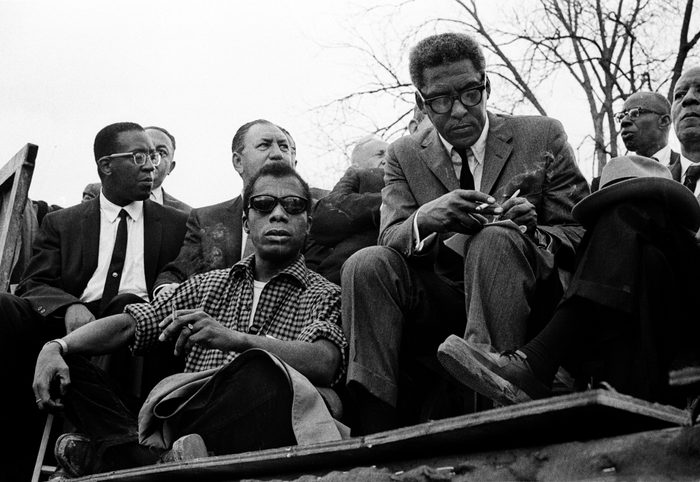
Their grit and sense of social justice moved the workers they championed and created a legacy.
When Sara Nelson, president of the Association of Flight Attendants – CWA, AFL – CIO, speaks to groups nowadays, her message is in the same vein. Her remarks go beyond the airline industry to advocate for decent jobs for all. Speaking at a rally in Chicago in October for the UAW, she said: “When we stand united for economic and social justice there’s nothing we can’t do and no mountain that we can’t move. Human solidarity is the solution to the problems we face as a nation and as a world.”
In June 2020, the ILWU and International Longshoremen’s Association led workers up and down the West Coast in a work stoppage that lasted nine minutes, the amount of time a Minneapolis police officer pressed down on George Floyd’s neck.
“Today we’re joining millions of people who are demanding justice and fundamental change,” said ILWU president Willie Adams.
Americans need to hear from unions and the growing expanse of workers’ centers that they are not just out for their own dues-paying members and supporters but for the benefit of all: from struggling college adjuncts to graduate students; gig workers hustling to earn enough to survive to warehouse workers in jobs that leave them bone-tired and aching; low-paid hospital janitors to overworked nurses pushing themselves to do their best.
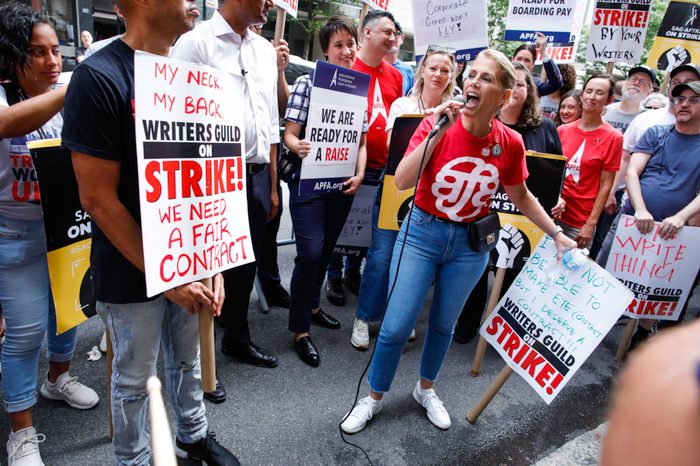
Unions should also renew their efforts in the South, where jobs are growing but unions are a mirage and where U.S. and foreign companies regularly treat U.S. workers as low-wage, voiceless bargains. Just as unions surged in the 1930s when they stood up for factory workers, they must focus today on low-wage service workers whose jobs are surging in place of good-paying blue-collar jobs. And they need to mirror the efforts of the Union of Southern Service Workers, which hopes to bring better pay and job protections to workers trapped in the avalanche of low-paying jobs.
There’s much sympathy today among Americans for the issues unions have raised around corporate greed and the ever-increasing disparity between CEOs’ salaries and those of average workers; many people feel it in their own lives. CEOs earned 344 times the salary of the average workers in the United States in 2022, up from 21 times in 1965, according to the Economic Policy Institute. For organizers, this pairs well with the fact that two-thirds of Americans support unions, a wave that has not existed since the mid-1960s, according to Gallup.
If workers, unions and labor advocates can reap the benefits of renewed energies and a summer and fall of strikes — and find their place in the larger movements combatting climate change, racial injustice and social injustice — then we might have a better shot at gaining better workplaces for a larger share of the working class and living better lives.
There’s much work to be done.
But considering the challenges, something more is needed besides the grit to endure long lonely hours and soul-crushing defeats: hope.
Studs Terkel, who inspired me as a young journalist to focus on unions and workers, offered an important reminder for labor, in his book Hope Dies Last, that very much fits the current moment: “Hope has never trickled down. It has always sprung up.”
A former labor writer for the Chicago Tribune, Stephen Franklin is a Pulitzer Prize finalist and an adjunct professor at the University of Illinois Urbana-Champaign School of Labor and Employment Relations.

